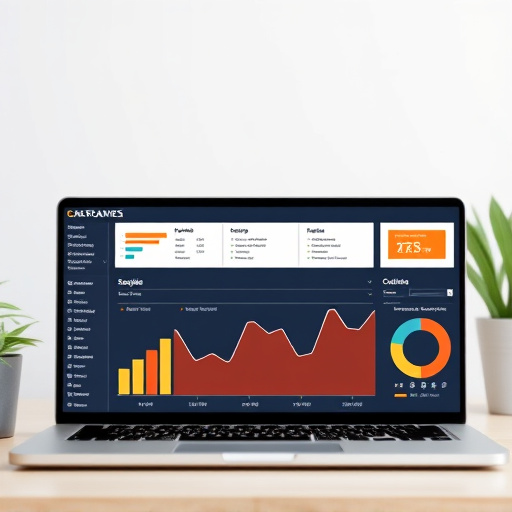Scalable web design prioritizes adaptability in online platforms, ensuring they adjust to diverse devices and user preferences while maintaining performance and usability. Key principles like responsive design optimize user experiences across smartphones, tablets, and desktops, boosting search rankings and attracting broader audiences. Local businesses adopting these strategies stay relevant, adapt to trends, enhance local SEO visibility, and effectively compete online through regular updates and testing.
In today’s rapidly evolving digital landscape, adopting a scalable web design is no longer an option but a necessity. As technologies advance and user expectations shift, websites must adapt seamlessly. This article explores the core principles of scalable web design, highlighting key components that ensure adaptability. We delve into future-proofing strategies, providing best practices to create websites that not only survive but thrive in an ever-changing digital environment, all while enhancing user experience.
- Understanding Scalable Web Design Principles
- Key Components for Adaptability in Web Design
- Future-Proofing Your Website: Best Practices
Understanding Scalable Web Design Principles

Scalable web design is an approach that prioritises flexibility and adaptability over fixed structures. It’s about creating websites that can seamlessly accommodate changes in technology, screen sizes, and user preferences. This isn’t merely about making a website look good on different devices; it involves structuring content and components in a way that enables efficient scaling without compromising performance or usability.
Central to scalable web design are principles like responsive design, where layouts adjust dynamically based on the user’s device. This ensures an optimal experience for users accessing the site from smartphones, tablets, or desktops. By implementing these practices, web designers can improve Google search rankings and attract a broader audience, as search engines favour websites that offer consistent, high-quality experiences across various platforms. Moreover, a well-designed, scalable website can be easily maintained and updated, keeping it relevant in the ever-evolving digital landscape, even for web design near me professionals looking to stay ahead of the curve.
Key Components for Adaptability in Web Design

In the realm of scalable web design, adaptability is key to ensuring a website remains relevant and effective as technologies evolve. For web designers in Davie FL or Dallas, implementing responsive design principles is non-negotiable. This involves creating layouts that adjust fluently based on screen size, from mobile phones to desktops, providing an optimal user experience regardless of the device.
Essential components for scalability include flexible grids, media queries for styling, and dynamic content loading. Local business online marketing strategies benefit immensely from such designs as they cater to a diverse audience, enhancing accessibility and engagement. Moreover, modular coding practices allow for easier updates and modifications, ensuring websites can keep pace with emerging trends in web development.
Future-Proofing Your Website: Best Practices

To future-proof your website in the dynamic landscape of technology, adopting a scalable web design is non-negotiable. This approach ensures your site can effortlessly adapt to emerging trends and changes in user behavior, from increased mobile traffic to new browser technologies. Think of it as building a flexible, ever-evolving digital hub rather than a static structure.
Implementing best practices like using responsive design principles, prioritizing performance optimization, and staying updated with industry standards is crucial. A custom website design that incorporates these elements can boost local search visibility for small businesses, enabling them to compete effectively in the online marketing arena. Regular updates and testing underpin this strategy, ensuring your scalable web design remains a cutting-edge asset that captivates users regardless of the technological tide.
Scalable web design is not just a trend, but an essential approach to stay relevant in today’s digital landscape. By understanding and implementing adaptability principles, key components, and best practices, website developers can future-proof their creations. This ensures that websites not only accommodate changing technologies but also provide users with seamless experiences, now and in the years to come. Embrace scalable web design to keep your online presence dynamic and relevant in an ever-evolving digital world.














